SRF vs SRF& PRF
All inductors have interwinding capacitance and therefore have a parallel self resonant frequency SRF . They ought be called PRF but aren’t (!) only by some in the RF world because caps can have series L and then lumped stray Parallel LC so there is a SRF before the PRF then they behave as inductors above this f.
This is similar but opposite to all capacitors which due to 0.5 to 1nH per mm of wire or electrode length have a series resonant frequency. SRF.
Air coils are “cool” but still has C and are used in TV tuners for in bandshaping filters or VCO’s with precision and cavity shields.
The air core inductors used for RF are high Q and high SRF. ferrite core inductors are smaller due to high mu and higher mu electrical steel reactors have even lower SRF.
Core saturation
”All BUT air coils saturate” and only used well below this as the Z_L(f)=DCR+2Pi L and when the core saturates the BH curve flattens and L which is related to the slope drops towards zero, harmonic currents rise sharply, Pd rises with I^2 as well and then thermal runaway occurs (poof). Yet they are mandatory for Woofer..Tweeter crossover band splitting filters to avoid the harsh effects of ACDC, U2 and other good zombie loud music shorting the Crossovers and “woofing your tweeters”.
Power chokes or Reactors
Power transformers are oil cooled can withstand the heat if interrupted current at line f , when the resume phase is out of phase from off state, Remanence charge still exists and they start up in saturation causing megawatt units to hum loudly on start until flux balanced.
Back to Mainstream inductors
I suspect you were only asking why are some Inductors are others called chokes and other acronyms like short and curlies (j/k)*
Thus is because choke implies choking higher Frequencies than the DC and AC harmonics that it can handle in the lower f current spectrum. The accuracy is not as important, just choke whatever it can into a shunt cap to make a tagteam series L and added shunt C choke ‘n block. no I’m not talking about Asian Martial Arts or the Kickboxing..
Some ferrite chokes are called ferrite beads that surround the wire and add inductance with lossy conductive particles in the slurry so they also absorb energy at the high impedance currents thus higher mV levels to behave somewhat like a 100pF Rf shunt cap except reduce the currents rather than increase them, yet both reduce the Rf ripple voltage but beads reduce current and that helps reduce mutual coupling current to nearby high impedance circuits. Whew. Take a breath. let it sink and say ummmm. Was that bad english? Yes i’m an ungineer.
Hey if you are still with me bravo. I’m going to repeat what might already has been answered.
Chokes are to pass DC and/or signal and block higher noise spectrum.
Inductors are never ideal and the sL/DCR=Q the complex impedance quality ratio with respect to the DC resistance. This is just as important to SMPS as low ESR (effective series resistance) caps where Q =sC/ESR)
If you search my answers I wont repeat the handy “RLC nomograph” that allows you see Impedance of RLC vs f on not 3 but 4 yes 4 axes and plot the “Bode” frequency response . Very handy for SRF, PRF, RC vs f Vs RL and Z(f) or your short and curlies with added resistance.
opinions are my own experience. Since back in the hippie days.


